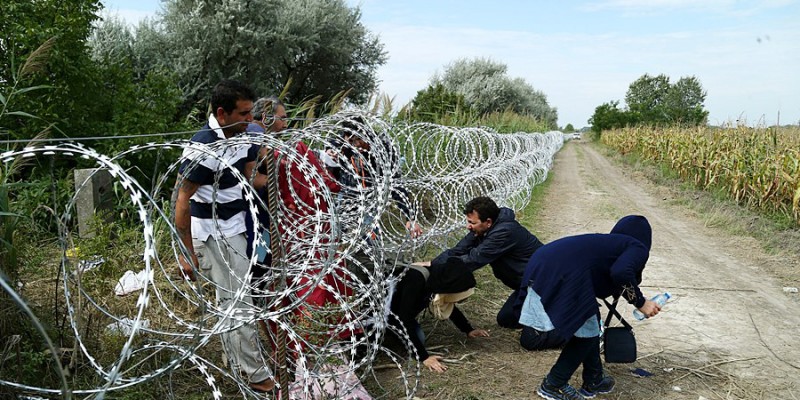1. An historical day for Europe
It is an historical day, the Guardian writes. The first groups of migrants and refugees are deported from the Greek island of Lesvos to the Turkish shores. They are mainly Pakistanis, Bengalis and Moroccans (a nationality representing a very small percentage of the people subjected to smuggling in the eastern route to Europe). These are the first of thousands of evictions, under the European deal with Ankara.
2. The first ones to go back
First #migrants docking at #Dikili port. To be registered in tents here then probably taken to deportation camps pic.twitter.com/bYY60vCm0N
— Mark Lowen (@marklowen) April 4, 2016
The photo was taken by the BBC correspondent in Turkey on Mitilene whalf on Lesvos island.
3. Arrivals in Italy in 2016: +324%
In March 2015, Italy received 2,283 migrants. This year, in March, 9,683 migrants landed on the Italian coasts, an increase of 324% from the previous year. Deaths at sea are up by a similar proportion: from 53 last March to 153 during the same month this year. It is difficult to make reliable forecasts based on this growth, but there is no doubt that the block between Greece and Turkey will now cause new highs in the transit from Libya to Italia.
4. Offshore hotspots, a proposal
Today, the EU is none other than a common currency and a common market. However, a step towards a concrete community could easily be done. For instance, “it is sufficient that hotspot management is conducted at supranational level – and not at national level – by EU staff to get a better distribution of costs and responsibilities”. And if they are offshore – as an embassy – accepted migrants would immediately be admitted in Europe overcoming the Dublin regulation obstacles. Stefano Passigli’s proposal in Corriere della sera.
5. Migrants remittances
How much are remittances of 30 millions of migrants in Europe worth ? Between 5% and 7% of Europe’s GDP. Which means that, on average, a migrant in Europe sends around $12,000 home every year.
6. Violence in Calais
75% of migrants and refugees living in the Calais “Jungle” say they have experienced French police violence. The findings were collated by the Refugee Rights Data Project and include physical violence, verbal abuse, tear gas and but also sexual violence.
7. Lawyer‘s words.
“Xenophobes are just ….. minorities, perhaps inevitable: in fact the number of foreigners in Italy remains marginal compared to other European countries”. Why the arrival of foreigners is relevant for Europe and Italy. The lawyer Sabino Cassese’s statement in the radio show “Tutta la città ne parla”.
8. What is left of the Arab springs
GRAPHIC: The Arab Spring five years on
(Via The Economist) pic.twitter.com/CsKiahtR9I
— The Int’l Spectator (@intlspectator) April 3, 2016
9. The capitals of migrants, 6 documentaries
The journeys of migrants from the departure, transit or arrival cities. 6 mini-documentaries by two Italian journalists for the Odissea 2.0 project that describes 6 cities (Dakar, Bamako, Ouagadougou, Niamey, Tripoli and Lampedusa) and 6 countries (Senegal, Mali, Burkina Faso, Niger, Libya and Italy) crossed by the flow of migrants from Africa to Europe.
10. Migration Studies, free articles
“Deportation” is the word “in vogue” today with the first boats returning migrants and refugees from Greece to Turkey. The Migration Studies by the University of Oxford provide for free a lot of articles on the topic or on a related theme.









